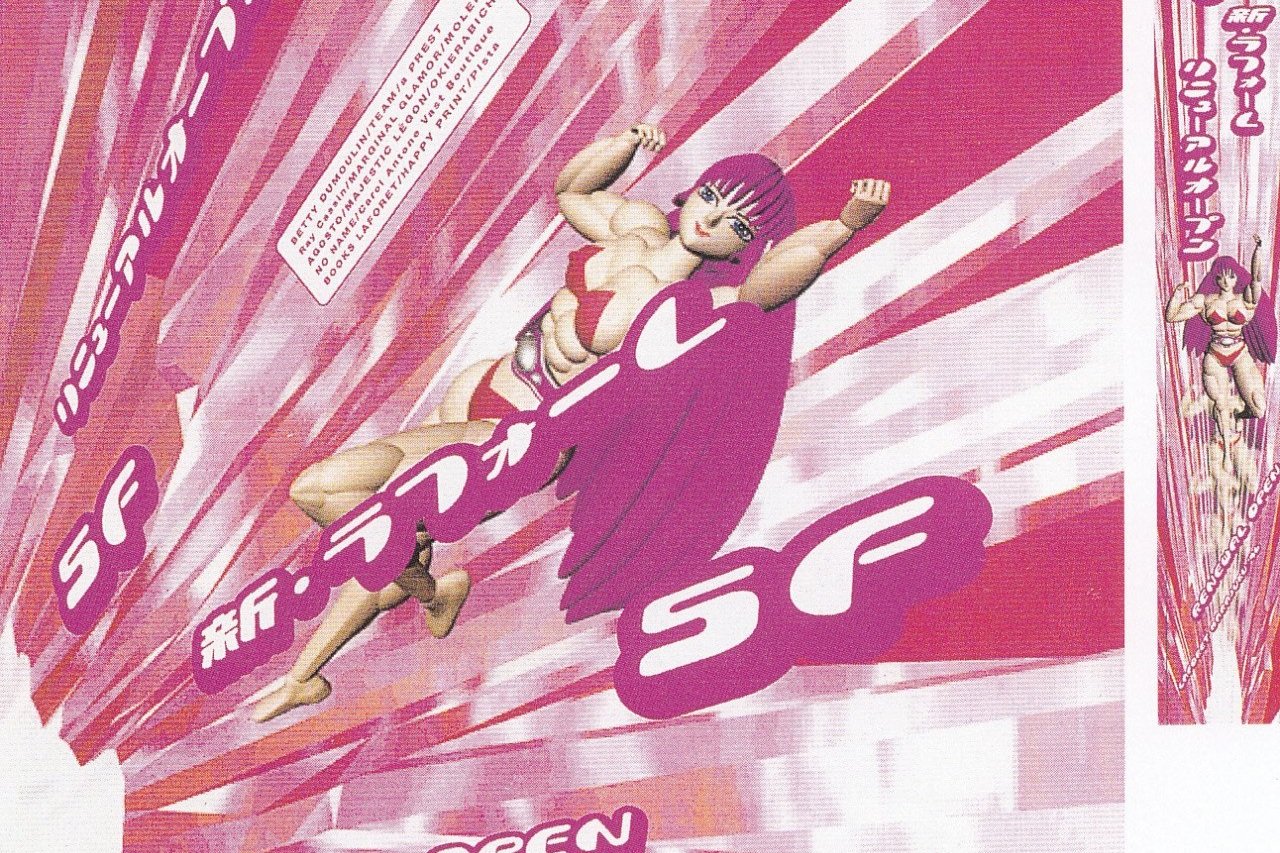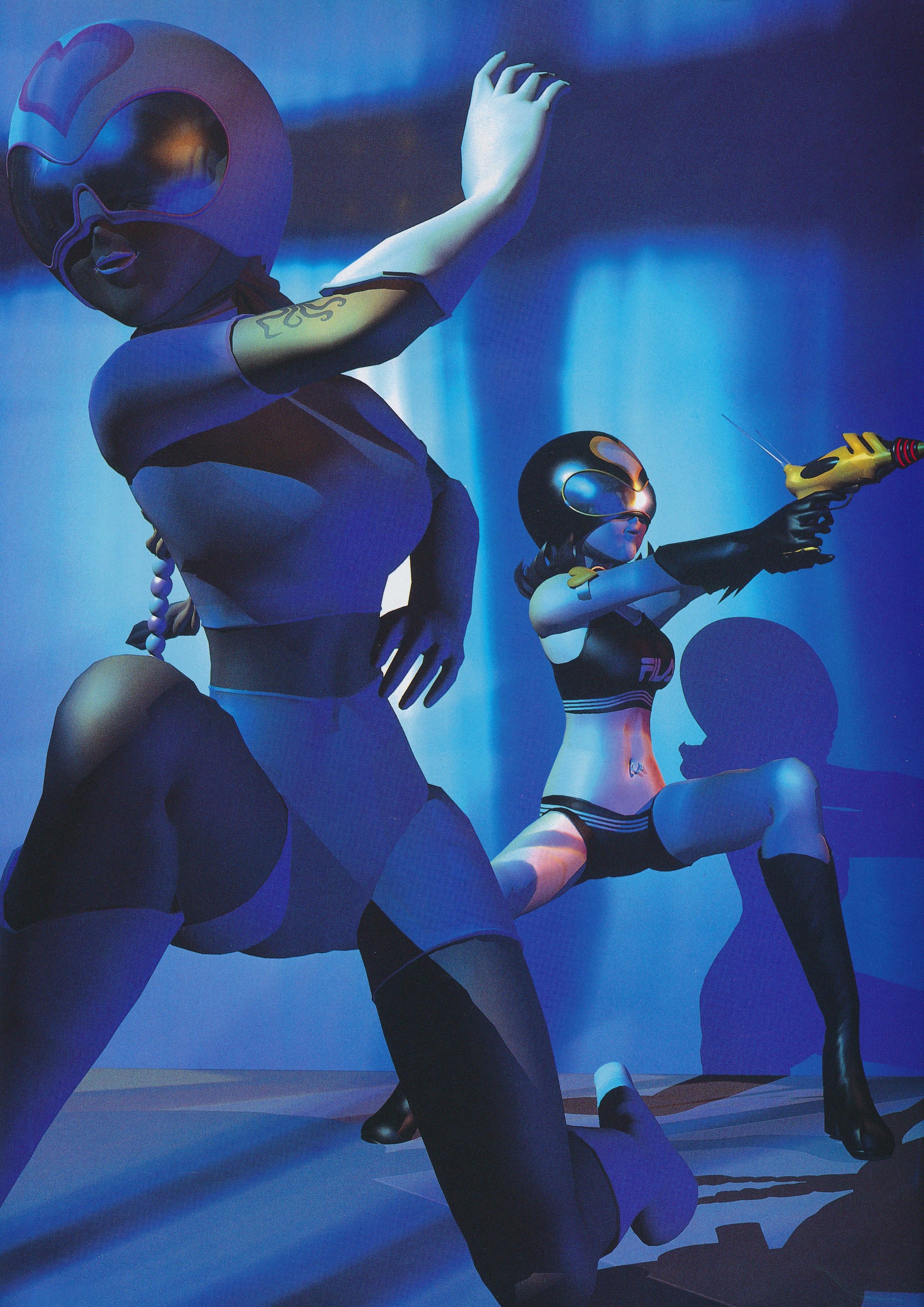Before Y2K: Digital Art in Japan Before the 2000s

Way before the banks of vector art, elaborate CGI cartoons, and the NFT craze, digital art was incredibly limited. In fact, before the second millennium, it was basically non-existent, until the last few years of the 20th century.
Kitty in Bust A Groove by Hideyuki Tanaka, 1997
New Year’s Greetings Card by Norio Nakamura, 1996
Until then, methods and mediums that were purely physical were preferred, like drawing and sculpting artisanally. Photography and videography were manipulated hands-on during the process of shooting and less during the editing and development of such projects. Therefore, the introduction of computer art was a drastic game-changer for the industry of arts and media, as well as for independent artists who were looking for a less traditional path; although it was far from what it is now since digital artists had to rely on floppy disks and chunky technology. During the 1990s, the futuristic appeal of digital art attracted plenty of contemporary artists around the globe, notably in Japan.
By Ichiro Tanida
By Ichiro Tanida
During this time in Tokyo, the street fashion scene was booming, also known as the Urahara movement. Now legendary designers would work with avant-garde art directors and creators to advertise their collections. In fact, Laforet Harajuku and Tokyo’s Parco department stores were renowned for their eclectic billboard fashion advertisements, which were successful thanks to the advancements in digital art. Actually, the creative director and advertising tycoon Katsunori Aoki worked on a few projects with the iconic digital artist Ichiro Tanida for Laforet.
Laforet ads by Tanida and Aoki
The aforementioned artist was one of the first Japanese artists to take on 3D art. Born in 1965, Tanida graduated from the Toyo Institute of Art and Design in 1986 in Tokyo. Artistically revolutionary in its basis, Tanida created a character called Jane, a fierce woman oozing sex appeal and poise, which often appears in his creations.
The graphic designer has claimed that he prefers to draw powerful women because he believes that an increase in the representation of strong female figures could better modern society. His distinctive style is characterized by collectible figurine-like proportions and interesting textures, like his signature plastic sheen on his subjects, with a mix of realistic appearances.
He represents Japanese society well, incorporating classic high-school sailor uniforms, as well as Japanese businessmen. His art brightly reminisces the y2k and cyberspace trends of that time and the epoch’s video game fever, yet his art is timeless. Other than that, Tanida’s portfolio extends from commercial videos to album covers for popular musicians.
Laforet ad by Tanida and Aoki
On another hand, Hideyuki Tanaka is one of the most acclaimed artists that was making waves before the 21st century. Born in 1962 in Shizuoka, this digital artist style played more on the “kawaii” culture in vogue in Japan. In fact, he was influenced by legendary mangas like Astro Boy and Tensai Bakabon, which really reflects on his iconic character Milk-chan who first made an appearance in 2000.
Milk-chan
However, before the birth of Milk-chan, Tanaka has a noisier style, full of Y2K references, Americana, and fashion. Similar to Tanida, he worked with 3D creative softwares, building his signature style around the use of vivid colors, and semi-realism with a touch of consumerism. One distinctive trait of Tanaka’s art was his creation of eccentric characters, all demonstrating an unspoken, full-blown personality.
Apart from that, he already had an established career before the turn of the century. He already had plenty of exhibitions and worked on the branding and advertisements for brands like FILA and Super Lovers, as well as video work for Sony Records and Fuji TV.
“Supermodel” album design for Tomoe Shinohara, 1996
One might know him from Bust A Groove, a 1998 PlayStation action game recognizable by its heavy presence of music and Harajuku street fashion. Its popularity gave it a sequel. Hideyuki Tanaka’s art is powerful and eye-catching as ever, capturing a prolific era in the history of the digital world but remaining timeless.
Heat and Hiro, characters of Bust A Groove
On top of that, computer art heavily influenced the quality of video games. Back then [and still to this day], Japan was one of the leading countries in the industry of video games. Besides the popularity of arcades and innovative game consoles, the graphics of the game were on another level at that time. It was most difficult to capture fluid and natural movements and engaging effects with the time's software, but the advancements in computer graphics moved from minimalistic, pixelated visuals of the 80s, observed in games such as Donkey Kong and Pac-Man, to smoother, more interactive 3D graphics.
Donkey Kong
Pac-Man
The Tekken franchise, as well as The Legend of Zelda franchise, were spectacular digital achievements because the game designers were able to play with different textures, shadows, 360-degree point-of-views, etc.
Tekken 3, 1997
The Legend of Zelda: the Ocarina of Time, 1998
The improvement in the field of digital graphics for video games that happened in the span of a decade was astonishing, to say the least. Being able to offer more interactivity, as well as more creative and elaborate scripts were thanks to the possibilities expanding with digital design.
Tekken 3, 1997
The digital artist Gento Matsumoto was one of the pioneers in the progress of digital art in video games. Matsumoto was born in 1961 and graduated from the Kuwasawa Institute of Design in 1993, in Tokyo. In fact, it is said that he was close to Shigeru Miyamoto, the Nintendo genius behind Mario Brothers, Donkey Kong, and Zelda. Matsumoto founded Saru Brunei, a company in charge of digital design and development, which worked under Marigul Management Inc. Although Saru Brunei is defunct today, it worked alongside Nintendo, and Gento Matsumoto designed Cubivore: Survival of the Fittest [Doubutsu Banchou].
Cubivore: Survival of the Fittest, 2002
However, way before that, the digital artist already had an interesting body of works. He created some CD-ROMS, like Pop-Up Computer, an interactive digital pop-up book [video below], and Jungle Park, one of the first adventure sandbox games, which are a type of game that does not follow a linear script and focuses. His designs give off a cubic, cartoonish style, with influences of 80s arcade games and their pixelated look, but with a futuristic, acid touch.
Jungle Park, 1997
Minimalist yet bold and bright, Matsumoto aced every design, and won multiple awards, like the Japan Software Award and The Best Interactive Award among others. A less known fact about Gento Matsumoto is that he spent six months in jail due to some driving infringements, and published his own prison notebook as e-books.
Additionally, Norio Nakamura has also been part of the 90s video game refurbishing. In 1997, he created a computer game software for Sony’s PlayStation, called Intelligent Qube. However, he’s more renowned for his brilliant graphic design style. It’s minimalistic, subdued, subtly futuristic, and incredibly clever.
Close-up of Japan Sao Paulo Poster, 1995
Nakamura, born in 1967, has done a huge body of work full of advertisements, book covers, logos, and video work. In contrast to the aforementioned artists, Nakamura strays from the vivid, chunky, and sheeny art and seems to focus on the essential. Playing more with tech rather than techno, this digital artist has put his imprint on the world of graphic design, setting the tone for a new style emerging out of the last years of the 20th century, in contrast with the maximalist advertisements of the late Showa years.
広告批評, 1999
Moved DM, 1992
Despite the richness of the oeuvres of these digital artists, digital art’s progress in Japan was still minimal compared to the work now circulating freely on the internet from contemporary artists. Nowadays, the variety in style is countless.
teamLab Borderless
In fact, digital art is hopping out of its 2D realm and finding its place in museums, like Tokyo’s teamLab Borderless, which is an interactive exhibition by the artist collective teamLab, to virtual Instagram influencers, like Imma, a virtual girl with a team based in Tokyo.
Pink-haired Imma often models.
Even concerts are taking a new shape, like rapper kZm’s “VIRTUAL DISTORTION” album release party done in collaboration with VARP, which took the shape of an online-accessible virtual concert amidst the pandemic in 2020. It is safe to say that digital art in Japan came a long way, and it is best to remember that it has yet to reach its highest, most eccentric form.
About the Author:
Mizuki Khoury
Born in Montreal, based in Tokyo. Sabukaru’s senior writer and works as an artist under Exit Number Five.








